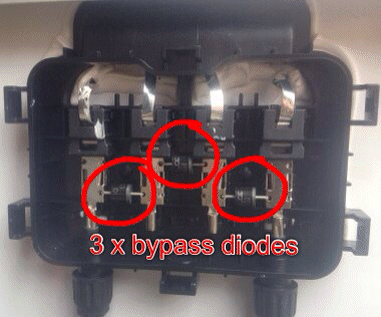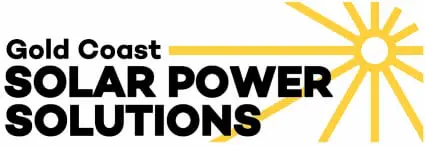Lately at Gold Coast Solar Power Solutions we have been getting quite a number of questions from customers about solar panel diodes, especially in regards to the number of solar panel diodes used on our solar panels. This seems like a very unusual question from a customer who does not know much about the internal workings of solar panels, however it appears that some solar power companies on the Gold Coast are using the number of solar panel diodes on their solar panels to prove that their solar panels are better than their competitors.
So what do solar panel diodes do and does it matter how many your solar panels have?
What are solar panel diodes?
On the back of every solar panel is a junction box, this is usually a black plastic box with a positive and negative lead coming out of it. This junction box is the point that the multiple strings of solar cells on the solar panel come back to; these strings are connected together in series to provide the combined voltage output from all the cells. Each of the strings of solar cells that come back to the junction box are protected by a bypass diode. The solar panel diodes can be seen in the junction box in the following picture.

The function of solar panel diodes
The cells in solar panels are connected in series, on a typical 250W solar panel 2 rows of 10 cells will be connected in series and that string will go back to the junction box. With the solar cells being connected in series each cell in the string will only perform as well as it’s weakest link, so if one of the 20 cells is in shade it will effectively limit the power output of all 20 cells. Now these 20 cells are connected in the junction box to another 40 cells in the solar panel, and without bypass diodes the remaining 40 cells would also be limited by the one cell that is being shaded, however with bypass diodes this shading is limited to the first 20 cells. In the junction box each 20 cell string will be connected through a bypass diode, this bypass diode can see a problem and bypass the shaded string so the remaining cells are not affected.
Another function of the solar panel diodes is to prevent hot spots on solar panels. When a section of a solar panel is not producing power as it should be due to shading, dirt, damage etc. the rest of the solar power system can see that part of the circuit as a load, and with a load it tries to feed power into it! Without bypass diodes in place this can heat up and potentially damage the section of the solar panel that is under performing, hence the importance of solar panel bypass diodes!
How many solar panel diodes should a solar panel have?
A quality photovoltaic solar panel should have at least 3 bypass diodes, and it all depends on the cell string configuration in the solar panel as to what is optimal. As long as at least 3 bypass diodes are connected in each junction box the solar panel will be protected fine, remember the main function of the bypass diodes is to bypass a problem area of the solar panel, as long as this is achieved then the solar panel bypass diodes have done their job.
Learn more about solar panels with the following articles:
- Solar Panel Efficiency
- Solar Panels and hail
- The Differences Between Solar Panels
- Solar Panels and Temperature
- Mono crystalline or poly/multi crystalline solar panels: Does it matter?
- 3 Phase Solar Inverters – Do you need one?
